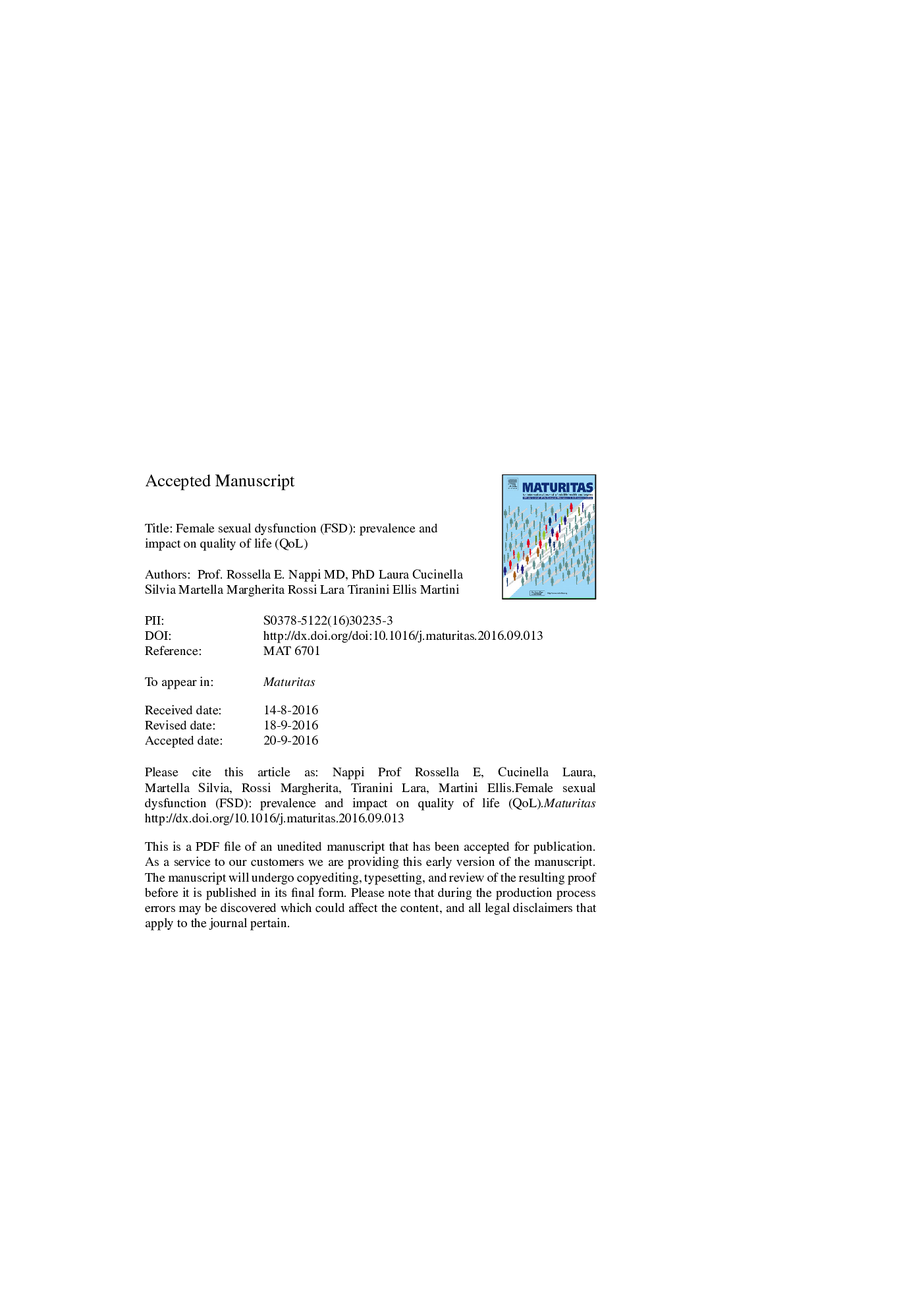| کد مقاله | کد نشریه | سال انتشار | مقاله انگلیسی | نسخه تمام متن |
|---|---|---|---|---|
| 8284130 | 1535293 | 2016 | 20 صفحه PDF | دانلود رایگان |
عنوان انگلیسی مقاله ISI
Female sexual dysfunction (FSD): Prevalence and impact on quality of life (QoL)
دانلود مقاله + سفارش ترجمه
دانلود مقاله ISI انگلیسی
رایگان برای ایرانیان
کلمات کلیدی
موضوعات مرتبط
علوم زیستی و بیوفناوری
بیوشیمی، ژنتیک و زیست شناسی مولکولی
سالمندی
پیش نمایش صفحه اول مقاله

چکیده انگلیسی
Female sexual dysfunction (FSD) and quality of life (QOL) are both multidimensional and have a bidirectional relationship across the reproductive life span and beyond. Methodological difficulties exist in estimating the real prevalence of FSD because it is hard to determine the level of distress associated with sexual symptoms in a large-scale survey. Approximately 40-50% of all women report at least one sexual symptom, and some conditions associated with hormonal changes at menopause, such as vulvovaginal atrophy (VVA) and hypoactive sexual desire disorder (HSDD), have a significant impact on sexual function and QOL. Sexual distress peaks at midlife, declines with age and is strongly partner-related. Many postmenopausal women are still sexually active, especially if they are in a stable partnership. Even though sexual functioning is impaired, a variety of psychosocial factors may maintain sexual satisfaction. That being so, health care providers (HCPs) should proactively address sexual symptoms at midlife and in older women, from a balanced perspective. Adequate counselling should be offered. Women with distressing symptoms may benefit from tailored hormonal and non-hormonal therapies, whereas women without distress related to their sexual experiences should not receive any specific treatment.
ناشر
Database: Elsevier - ScienceDirect (ساینس دایرکت)
Journal: Maturitas - Volume 94, December 2016, Pages 87-91
Journal: Maturitas - Volume 94, December 2016, Pages 87-91
نویسندگان
Prof. Rossella E. MD, PhD, Laura Cucinella, Silvia Martella, Margherita Rossi, Lara Tiranini, Ellis Martini,